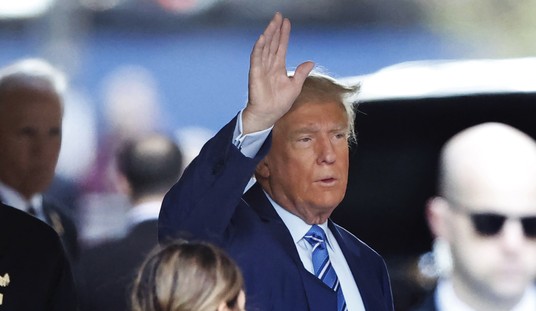The news media went agog yesterday in announcing that Barack Obama had finally found some corroboration on numbers of jobs “saved or created” by the Porkulus package last year. ABC News was a good example of this:
In a counterpoint to our earlier post on the skyrocketing debt: the nonpartisan Congressional Budget Office has a new report out on the now-more-than $800 billion off-budget stimulus program that Congress passed last year. Republicans have criticized that law ad-nauseum, pointing to the near-10 percent unemployment rate to argue that the stimulus did not work.
But today’s CBO report confirms that things could have been much worse without the stimulus. For instance, the report guesstimates that the bill created 1.8 million to 4.1 million (a huge spread!) jobs that wouldn’t have existed otherwise and the unemployment rate would have been between .7 to 1.5 percent higher without the stimulus.
The effects of the stimulus, according to the report, will continue to increase through part of 2010, before subsiding.
But is that actually what the CBO said? No. In fact, as Reason Magazine reported afterward, the director of the CBO took pains to note that his report only confirmed that the money went out:
“Critics of the stimulus listen up: CBO estimates that it put 2.8 million ppl to work in 1st 3 months of 2010.” But it’s stimulus boosters who ought to be paying more attention: Douglas Elmendorf, the head of the Congressional Budget Office, has stated plainly that his team’s estimates do not measure real-world outputs (just inputs), that they do not serve as an independent check on its success or failure, and that if the stimulus had not created jobs, the CBO’s figures would not reflect that fact. So no, sorry, try again: The CBO’s updates do not actually confirm whether or not the stimulus is creating jobs.
Peter Suderman reported on this in March:
See, the CBO doesn’t actually count jobs created. Instead, it uses models that assume that putting taxpayer money into the system results in additional demand, additional spending, and, consequently, additional jobs. Before the stimulus passed, it used these models to predict that the stimulus would create jobs. And now, in analyzing its effects, it’s using those same models to estimate that it has created jobs. But because the CBO relies on slightly updated versions of the same, original models throughout the process, it wouldn’t necessarily detect the fact that the stimulus didn’t work if that were the case.
Stimulus-boosters have basically ignored this. But the CBO, to its credit, has been fairly forthcoming about its methods and their limitations. In response to a question at a speech earlier this month, CBO director Doug Elmendorf laid out the CBO’s methodology pretty clearly, describing the his office’s frequent, legally-required stimulus reports as “repeating the same exercises we [aleady] did rather than an independent check on it.” CBO tweaks its models on the input side, he says—adjusting, for example, how much money the government has spent. But the results the CBO reports—like the job creation figures—are simply a function of the inputs it records, not real-world counts.
Following up, the questioner asks for clarification: “If the stimulus bill did not do what it was originally forecast to do, then that would not have been detected by the subsequent analysis, right?” Elmendorf’s response? “That’s right. That’s right.”
In other words, the CBO only verifies what got spent. It then relies on the same White House formulas to determine the numbers of saved and created jobs — which also just rely on output, not real-world verification. That’s one of the reasons why the White House claimed that they had saved or created over 12,000 jobs in New Hampshire when the Recovery.gov site (which uses feedback from the opposite direction) could only find 1432. The CBO isn’t involved in that process at all.
So how do we measure the success of Porkulus? Right now, we’re still down over 8 million jobs, the economy has slowed considerably after an artificial boost, and growth estimates from the private sector put the rest of the year at an anemic 1.5% pace. Those are the measures that count, especially to the Americans who have to live with them. Fewer and fewer people are impressed with the imaginary calculations of a White House that seems to find itself lost in academics rather than working to build actual economic growth.
Update: In another real-world measure, the first quarter GDP number has been lowered to a 3.0% annual growth rate, down from the previously announced 3.2%.








Join the conversation as a VIP Member